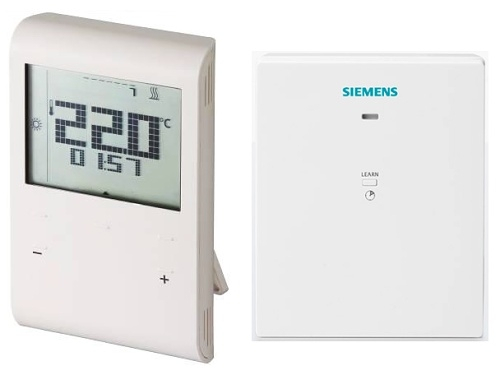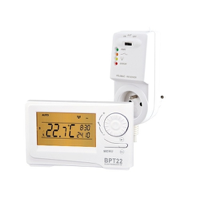Can you help us with the website?
Don't worry, it's small text information that helps us evaluate the site or target relevant advertising. More about cookies here.
It will help us greatly if you enable everything. You can only enable the cookies you want. Alternatively, it is possible to disable everything except those strictly necessary for the functioning of the site.
A wireless thermostat should be part of every modern home. If you are looking for comfort, convenience and if you use modern technology, this type of thermostat is right for you.
High demands on design and location are an easy requirement for wireless thermostats. It basically differs from the wire separating the switching part from the user. The transmitter is a control part with a temperature sensor, where you adjust the program and temperatures. The receiver is placed near the switch or within range of cables, wires, etc., such as a wall outlet or wall. Both devices communicate with each other using radio frequency, usually 868 MHz. Negative interference sources are eliminated in this band. But it is recommended to install both devices out of reach of other electrical appliances. Thanks to radio communication, the problem of placing the thermostat within reach of cables is eliminated and it can usually be placed anywhere in the room or even transmitted and controlled from anywhere within the range recommended by the manufacturer, and it can reach up to 20m easily over the wall or floor of the building. The limitations in transmission are steel structural elements or other metal signal jammers in buildings. Various measuring instruments are available for measuring signal strength, or you simply need to test the best location in the room. These thermostats are usually set at the factory so that after switching on, a learning mode is started which establishes communication between the transmitter and receiver without user intervention. If necessary, the learning button can also be switched on manually. The communication usually looks like the transmitter sending temperature and value changes to the receiver at set intervals. Some receivers can operate multiple thermostats from different parts of the building. The wireless thermostat is an extension of the classic wire thermostat, so the principles of installation and setting of the wire thermostat apply to it.


Shopping with us
Personal collection of goods
Opening hours
Payment options








Delivery options












Contact
Copyright © 2024 BOLA spol s.r.o.

 Bola.cz
Bola.cz